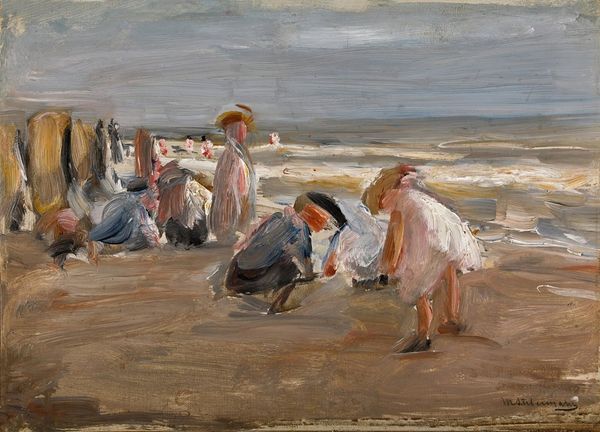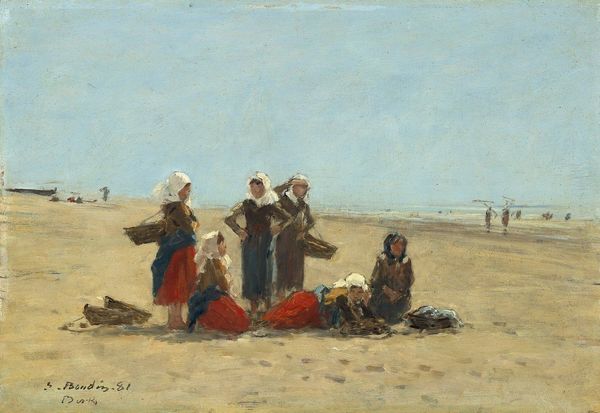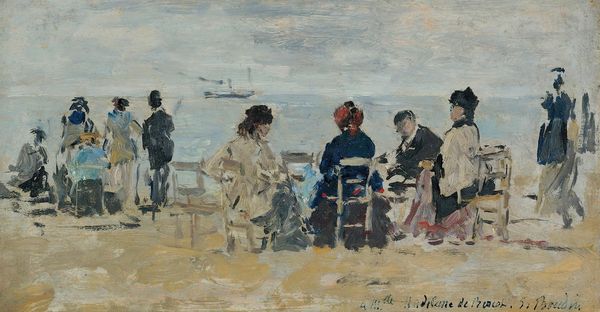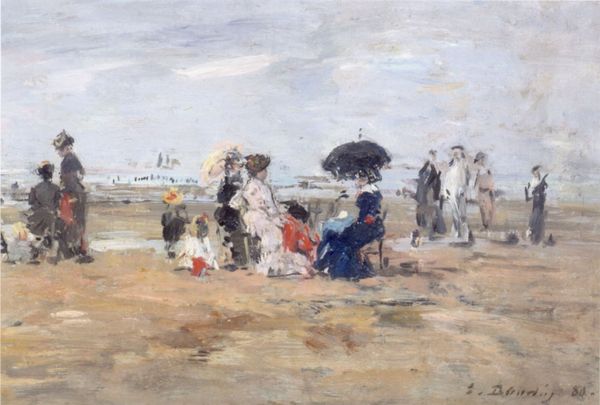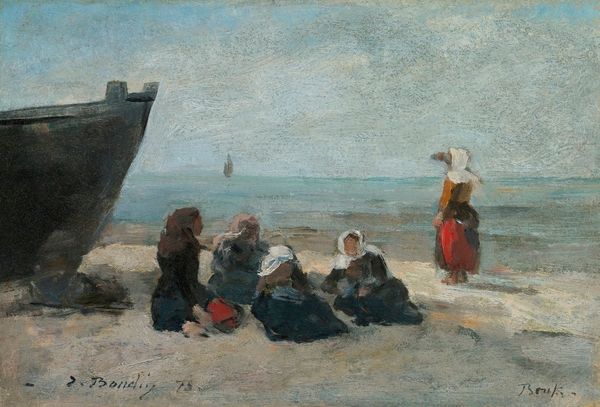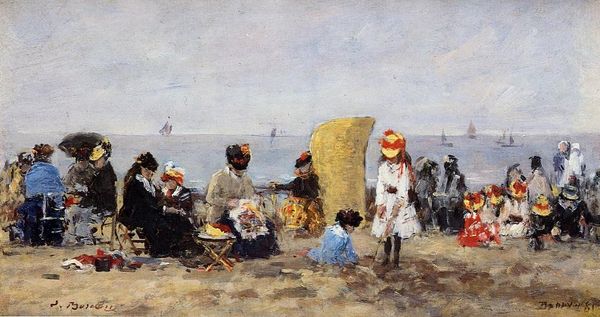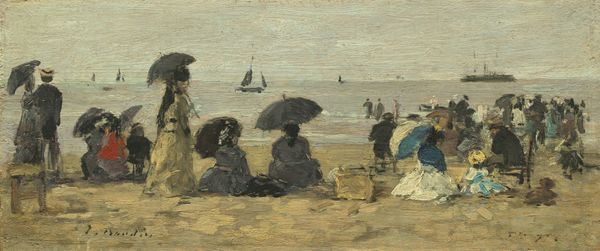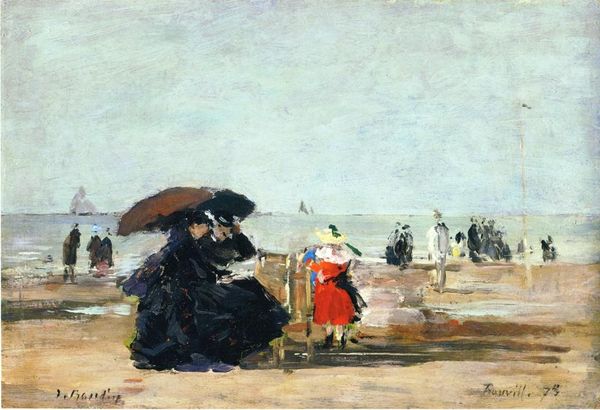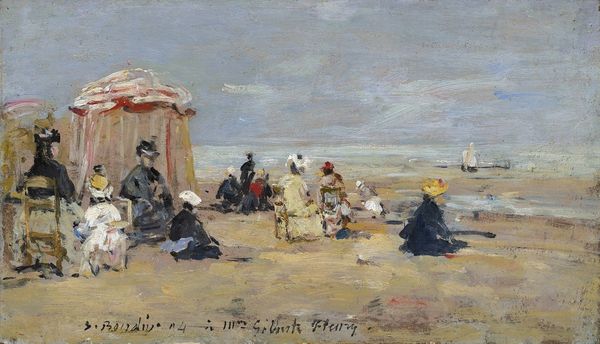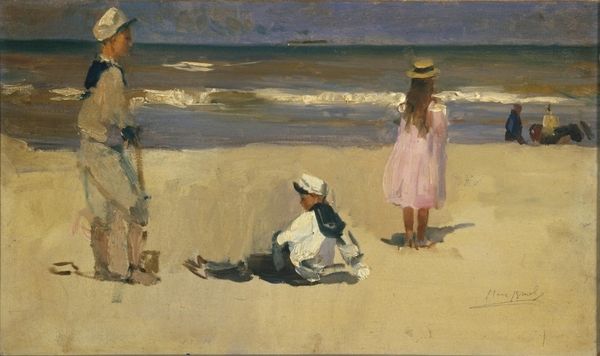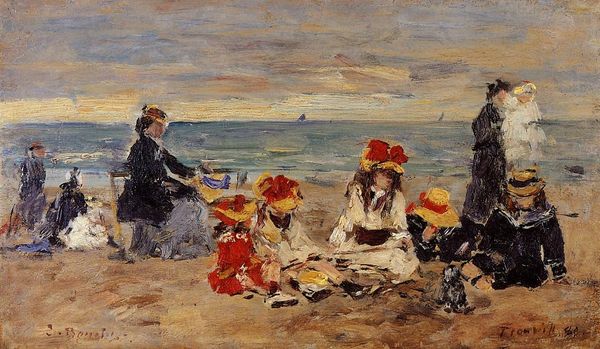
painting, plein-air, oil-paint
#
portrait
#
painting
#
impressionism
#
plein-air
#
oil-paint
#
landscape
#
oil painting
#
cityscape
#
genre-painting
Copyright: Public Domain: Artvee
Curator: This is Eugène Boudin’s "On the Beach, Trouville," an oil on canvas painted in 1887. The scene depicts a group of elegantly dressed women and children gathered on a sandy beach. Editor: My first impression is of quiet contemplation. The muted colors evoke a somber yet elegant scene, almost like looking at a faded photograph. The brushwork feels fleeting, capturing a transient moment. Curator: Boudin was known for painting en plein air, capturing the fleeting effects of light and atmosphere. Here, that approach not only defines the scene, but contributes to the changing identity of leisure itself, and of art in France in this period. Editor: Yes, notice how the clothing and parasols of these women communicate so much. The parasol becomes a symbol of wealth, class, but also a protection from the potentially socially damaging effects of sun-tanned skin. It's interesting how even something seemingly mundane becomes codified. Curator: The beach at Trouville became a fashionable resort during the Second Empire, attracting a bourgeois clientele. Boudin regularly depicted these beach scenes, essentially chronicling social rituals around this time and the space that fostered those new and evolving values. Editor: There is a delicate sadness here. The beach and seaside setting in and of itself can be symbolic of boundaries: between land and sea, familiar and unknown. The figures with their backs turned might signal introspection or a looking towards something distant, uncertain... Perhaps an unease with changing times? Curator: The art market certainly played a role. Boudin found a receptive audience for these charming depictions of leisure, providing a kind of aspirational image of modern life that echoed, even influenced, societal values, especially within these beachside towns in northern France. Editor: I appreciate that his paintings not only reflect life in 19th-century France, but speak to our perennial longings: freedom, status, reflection and escape, too. Curator: And seeing how paintings like this one encouraged a new idea of the artist, bringing art outside and into everyday life—quite significant.
Comments
No comments
Be the first to comment and join the conversation on the ultimate creative platform.

